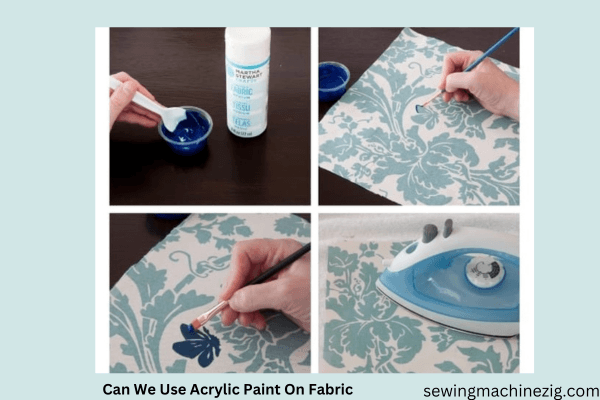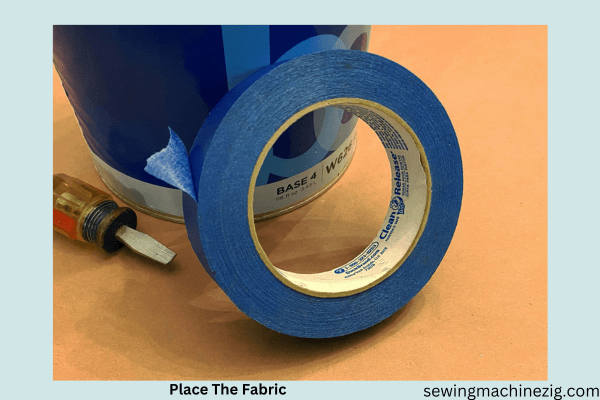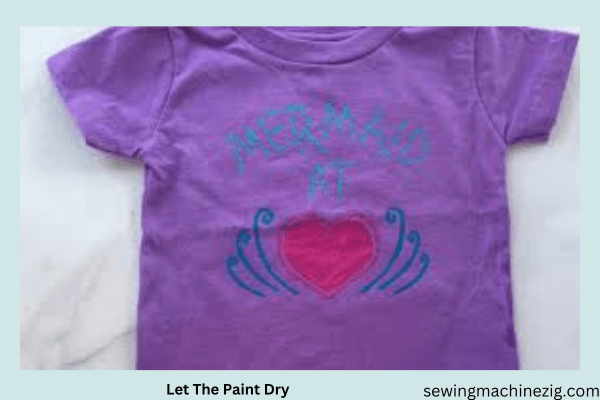
Acrylic paint, renowned for its versatility and vibrant colors, is not limited to traditional canvas and paper surfaces. It can also be used on fabric, opening up a world of creative possibilities for artists, crafters, and DIY enthusiasts. Whether you want to personalize a t-shirt and here you will learn how can we use acrylic paint on fabric, revamp home decor items, or create unique textile art, acrylic paint offers a convenient and accessible medium.
Thank you for reading this post, don't forget to subscribe!Using acrylic paint on fabric provides numerous advantages. Its water-based formulation allows for easy application, quick drying time, and effortless clean-up. Additionally, can we use acrylic paint on fabric like cotton; well acrylic paint offers excellent color saturation, providing rich and vibrant hues that can enhance the visual appeal of fabric projects.
Overall, learning how can we use acrylic paint on fabric, offers an exciting avenue for creative expression, allowing individuals to transform plain textiles into personalized works of art. With the right techniques and precautions, artists and crafters can achieve stunning and long-lasting results on fabric using acrylic paint.
Materials:
- Fabric: Choose a fabric made of natural fibers like cotton, linen, or silk, or synthetic fabrics such as polyester or nylon.
- Acrylic Paint: Select high-quality acrylic paint in the desired colors.
- Brushes or Sponges: Use brushes of various sizes or sponges to apply the paint to the fabric.
- Palette or Palette Paper: Use a palette or palette paper to mix and blend colors.
- Water or Fabric Medium: Use water to thin the paint or a fabric medium to enhance its flow and adherence to the fabric.
- Painters Tape or Stencils (optional): These can be used for creating precise edges or adding decorative elements.
- Fabric Pen or Pencil (optional): These can be used for marking guidelines on the fabric.
- Heat Source: You will need a hot iron or a clothes dryer for heat setting the paint.
Step-By-Step Guide:
Step 1: Pre-Wash The Fabric:

Launder the fabric to remove any sizing or dirt. Avoid using fabric softener as it can affect paint adhesion. Dry the fabric thoroughly.
Step 2: Prepare Your Workspace:

Set up a clean and well-ventilated area to work in. Place a protective layer or old newspaper to protect your work surface.
Step 3: Place The Fabric:

Lay the fabric flat on the work surface. If desired, secure it with painter’s tape to prevent shifting during painting.
Step 4: Mix The Paint:

Squeeze the desired acrylic paint colors onto the palette. Adjust the consistency with water or fabric medium, if needed, to achieve the desired texture and flow.
Step 5: Apply The Paint:

Dip the brush or sponge into the paint and apply it to the fabric in desired patterns or designs. Start with lighter colors and gradually layer darker colors on top for better coverage.
Example: If you’re painting a flower design, begin by applying a light yellow base color for the petals. Once dry, layer different shades of red and pink for the petals’ details, leaving some areas of the base color visible for depth.
Step 6: Let The Paint Dry:

Allow the painted fabric to air dry completely. This usually takes a few hours, but drying time can vary based on the fabric and paint thickness.
Step 7: Heat Set The Paint:

To ensure the paint bonds permanently to the fabric, heat set it using a hot iron or clothes dryer. Follow the manufacturer’s instructions for the specific paint brand and fabric type.
Example: For heat setting, place a clean cloth over the painted area and iron it on the appropriate heat setting for the fabric, pressing firmly for a few minutes.
Step 8: Wash And Care For The Fabric:

After heat setting, wait at least 72 hours before washing the fabric. When washing, turn the fabric inside out and use a gentle cycle with mild detergent. Avoid using bleach or harsh chemicals, as they can affect the paint’s longevity.
By following these steps and adding your own creative touch, you can successfully learn how can we use acrylic paint on fabric to transform fabric into personalized works of art.
Can Acrylic Colours Be Used On Fabric
Absolutely! Acrylic colors are a fantastic choice for adding vibrant and captivating designs to fabric. Their versatility and strong adhesion make them an excellent medium for fabric painting projects. Whether you want to personalize clothing, create unique home decor pieces, or engage in textile art, acrylic paint offers endless possibilities.
When it comes to applying acrylic colors on fabric, the process is straightforward. Preparing the fabric by giving it a thorough wash and ensuring it is completely dry helps to create an optimal surface for paint adhesion. Once the fabric is ready, you can unleash your creativity and experiment with various application techniques, such as brushwork, sponge blending, or even splatter effects.
One of the advantages of acrylic paint is its wide range of colors, allowing you to achieve the exact hues and tones you desire. From bold and vibrant shades to subtle and delicate pastels, acrylic colors offer immense creative flexibility. You can mix and blend colors on a palette to create custom shades or use them straight out of the tube for instant impact.
After you’ve finished painting, it’s essential to heat set the acrylic paint on the fabric to ensure its longevity. Heat setting can be done using a hot iron or by placing the fabric in a clothes dryer on a suitable heat setting. This process helps the paint bond with the fabric fibers, making it more resistant to washing and wear.
It’s worth noting that acrylic paint on fabric may result in a slightly stiffer texture compared to untreated fabric. While this may be desirable for certain projects, such as creating bold designs or decorative elements, it’s important to consider the fabric’s intended use and the level of flexibility required. It’s another process of can we use acrylic paint on fabric.
What Paint Can Be Used On Canvas
When it comes to painting on canvas, there are several types of paint that artists can choose from to achieve their desired effects. The choice of paint depends on factors such as the artist’s preference, the desired level of opacity, the drying time, and the intended style of the artwork.
The most commonly used paints for canvas include acrylic paint, oil paint, and watercolor paint. Each type of paint offers unique characteristics and advantages, allowing artists to explore various techniques and create stunning works of art on canvas.
Here Are The Three Most Commonly Used Types Of Paint For Canvas:
Acrylic Paint:
1. Acrylic paint is a versatile and widely popular choice for canvas painting.
2. It is water-based, dries quickly, and is available in a wide range of colors and finishes.
3. Acrylic paint is known for its excellent color pigmentation, allowing for vibrant and bold artworks.
4. It can be diluted with water for transparent layers or applied thickly for textured effects.
5. Acrylic paint is flexible and durable, making it suitable for both abstract and detailed works.
6. It is easy to clean up with water and requires minimal additional materials.
Oil Paint:
1. Oil paint is a traditional medium that offers rich, luminous colors and a glossy finish.
2. It has a slow drying time, allowing for blending, layering, and working with wet-on-wet techniques.
3. Oil paint offers a wide range of textures and can create smooth, detailed, and realistic effects.
4. It requires the use of solvents for cleaning brushes and thinning the paint.
5. The drying process of oil paint is prolonged, often taking days or weeks to fully cure.
6. Oil paint is favored by artists who appreciate its depth, versatility, and ability to create subtle tonal variations.
Watercolor Paint:
1. While primarily associated with paper, watercolor paint can also be used on canvas.
2. Watercolor paint is transparent, allowing for delicate washes and layered effects.
3. It offers a unique luminosity and can create ethereal and atmospheric artworks.
4. Watercolor paint requires a light touch and careful control of water-to-paint ratios for desired results.
5. It is typically used for creating landscapes, portraits, and softer, more fluid compositions.
6. When using watercolor on canvas, it is important to ensure that the canvas is properly primed to prevent excessive absorption.
Overall, the choice of paint for canvas depends on personal preference, desired effects, and the artist’s individual style. Acrylic paint is a versatile and beginner-friendly option, while oil paint offers richness and depth. Watercolor paint provides a unique and transparent quality. Artists can experiment with different types of paint to discover their own preferred medium for creating captivating artworks on canvas.
Conclusion:
Acrylic paint can indeed be used on fabric, providing a wonderful opportunity for artistic expression and creativity. With its vibrant colors, versatility, and ease of use, acrylic paint offers a wide range of possibilities for fabric painting projects. Whether you’re customizing clothing, creating textile art, or embellishing home decor items, acrylic paint adheres well to fabric surfaces and allows for various techniques and effects.
By properly preparing the fabric, applying the paint with brushes or other tools, and heat setting the finished artwork, you can achieve durable and visually captivating designs on the fabric. Hopefully, now you understand very well how can we use acrylic paint on fabric. So, unleash your imagination and explore the exciting world of acrylic paint on fabric!
FAQs:
Q 1: Can We Use Acrylic Paint On Fabric Directly?
A: Yes, acrylic paint can be used directly on fabric. However, it is recommended to prepare the fabric properly by washing and drying it beforehand to remove any sizing or dirt. This helps create a clean surface for better paint adhesion.
Q 2: Do I Need To Mix Anything With Acrylic Paint Before Applying It To Fabric?
A: Acrylic paint is usually ready to use straight out of the tube. However, if you want to achieve a more transparent effect, you can mix the paint with water or a fabric medium to dilute it. This allows for easier blending and layering of colors.
Q 3: Will Acrylic Paint Wash Off Fabric?
A: Once properly heat set, acrylic paint becomes permanent on the fabric and is resistant to washing. Heat setting involves applying heat to the painted fabric using an iron or a clothes dryer. Follow the specific instructions provided by the paint manufacturer for the best results. “can we use acrylic paint on fabric“
Q 4: Can I Use Acrylic Paint On Different Types Of Fabric?
A: Acrylic paint can be used on various types of fabric, including cotton, polyester, canvas, and more. However, different fabrics may have different levels of absorbency and texture, which can affect the appearance and feel of the painted design.
Q 5: How Do I Achieve A Softer Texture With Acrylic Paint On Fabric?
A: To achieve a softer texture, you can dilute the acrylic paint with water or a fabric medium. This will create a more transparent and fluid application, resulting in a softer look and feel on the fabric.
Q 6: Can I Mix Different Colors Of Acrylic Paint On Fabric?
A: Absolutely! Acrylic paint allows for easy color mixing on a palette. You can experiment with blending different colors to create custom shades and achieve the desired color variations in your fabric artwork.
Q 7: Can I Paint On Dark-Colored Fabric With Acrylic Paint?
A: Acrylic paint is suitable for painting on both light-colored and dark-colored fabric. However, keep in mind that lighter colors may appear more vibrant and opaque on dark fabric, while darker colors may require multiple layers for optimal visibility.”can we use acrylic paint on fabric“



